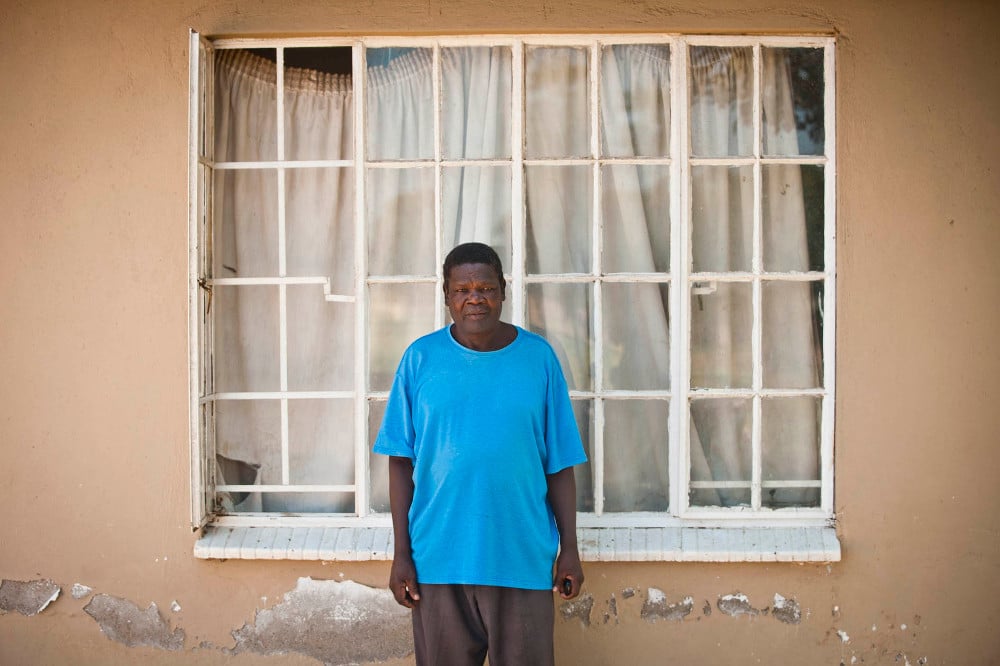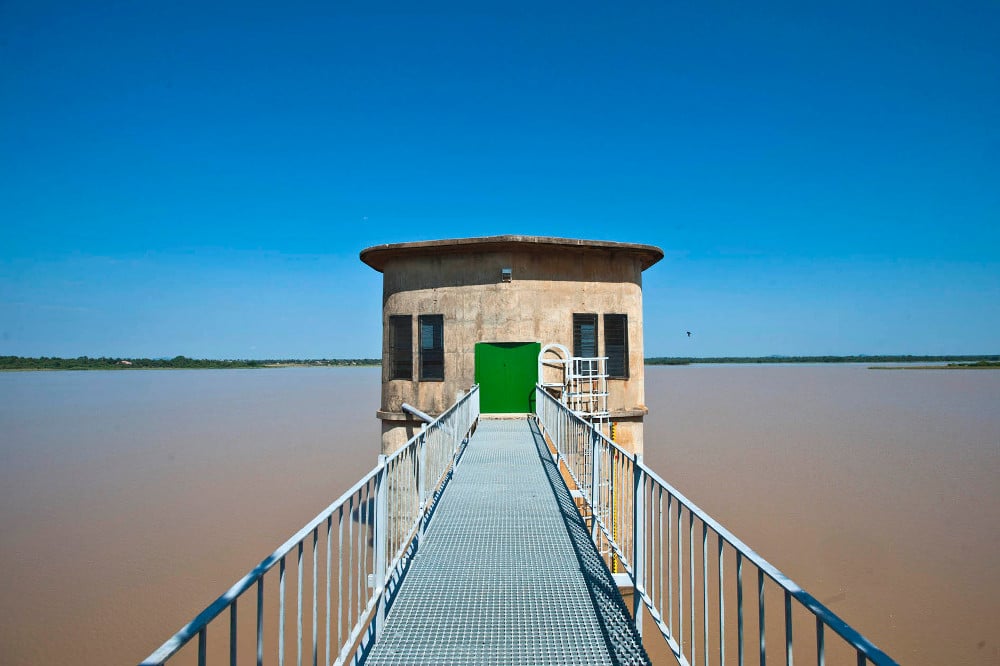Plans to install working pipes in Giyani have not yet come to come to fruition and many residents have no choice but to bath and wash their clothes in canals.
Eight years after she should have had water in her yard, Maria Hlungwani throws an old paint can into the cement irrigation channel outside her house and waits for it to sink to the bottom. The water here is stagnant and has a layer of algae. She pulls at the string attached to the handle, hauling it up the side. The litre of milky water goes a small way towards filling the 20-litre blue containers on her wheelbarrow.
“It is hard work and you do it every day. But we do not have water here.” She throws the can again. “We should have water.” Bulk water pipes – big enough for a person to climb inside – are piled in 5m sections in the veld nearby.
“That is where our water should be coming from,” she says as she points at them. She uses the water from the canal for bathing and washing clothes, and has to pay R3 a container for drinking water.
Her home, and others in the E Section to the north of Giyani town, have never had water. The former capital of the Gazankulu homeland has a single, small dam. This was built to provide irrigation for local farmers, not the town.
Its water is meant to come along the canal Hlungwani relies on for washing. This transfers water from the nearby Middle Letaba Dam to Giyani’s water treatment works.
The works lie in the thick bush at the bottom of Manombe Mountain, which forms the eastern boundary of Giyani and is the only high point in the otherwise flat Lowveld. But the works are in the middle of a protracted upgrade.
Even with the new plant, there is not enough water for the 91 villages in the Giyani area. After a regional drought in 1998, water affairs began working on the Nandoni Dam, 50km to the northwest, which would catch enough water for the whole region. Pipes would then pump its water to other dams.
Burst pipes
In 2007 the new pipes linking Nandoni to Giyani were tested, and they burst. The department sued the contractor for putting in substandard pipes. These had been signed off by the technical director for Mopani district municipality, who was subsequently suspended for faking her engineering qualifications.
An engineer in the area says the water pipes were joined together with fibreglass, which cracked under the pressure. The pipes had to be dug out of the ground so the process could start again.
A woman washing clothes next to Hlungwani says in Sesotho: “People want to eat [the term for corruption] so we must suffer.”
The court case is still ongoing.
Disaster area
In 2009, a drought led the government to declare Giyani a disaster area. The Giyani and Middle Letaba dams emptied and water affairs set aside R284-million for the pipeline to Nandoni to be dug in and installed again. People had to queue for municipal water trucks. The tender was awarded by the municipality in 2010, but was immediately taken to court by the losing contractors, who claimed the process had been improper.
The high court found the bid “did not comply with the bid specifications”, the companies had been “guilty of fronting” and the municipality was “motivated by bias and bad faith” in awarding the contract. It ordered the bid be reissued, and the original bidders won in February 2011. The losing side went back to court but then withdrew its case in April 2014.

Elias Ngobeni has lost faith in the Mopani municipality. (Photos: Delwyn Verasamy, M&G)
Work had to be halted in the interim, although it has not subsequently restarted and the trenches have become overgrown with weeds.
The same pipeline should be supplying Malamulele – where there have been extensive protests about failures of the Thulamela municipality – and Muyexe, which President Jacob Zuma visited twice and mentioned in his 2009 and 2013 State of the Nation addresses as a “model village”.
The current upgrades to Giyani’s water infrastructure, the price of which has escalated to R500-million from R100-million, have done little to ease problems.
Broken pumps
A local familiar with the water treatment plant says there are myriad problems: one of the town’s pump stations is broken, so cannot pump water around the town. This means the reservoir overflows and the plant has to stop working.
“When there is water flowing, it makes the old pipes in town explode.” But most of the time there is just not enough water to supply the whole town, says the local, who asked not to be named for fear of reprisal.
Old infrastructure is blamed, but it got this way because of a lack of maintenance, and money for new infrastructure being siphoned away by unscrupulous officials. “The municipal managers in this area love to eat.”
He laughs and traces the shape of a rotund belly with his hand, blaming the problems on the recently suspended manager of Mopani, Tim Maake. The department of co-operative governance forced his suspension on allegations of mismanagement, with local newspapers saying that January salaries were not paid by the department until after he was suspended. The Mopani municipality says it cannot comment until the issue is resolved.
Every household in Giyani’s main suburb to the north has at least one 1 000-litre water tank in their yard.
Water source
To the west of town there is no water. “That is our water,” says Elias Ngobeni, pointing to the mountain 6km to the east. A lifelong resident of the area, he says the nearby Klein Letaba River used to be the only source of water, from which they would collect water and drag it home behind a donkey.
That was in the 1950s when Giyani was “one shop on a dirt road”. Since then it has exploded, with local government offices providing the biggest source of employment. It was the capital of the Tsonga homeland of Gazankulu. A few shopping centres and hardware shops are the only other industry.

Many Giyani residents have no water simply because there is no way for it to get from dams in the area to their houses.
A dozen water containers, ranging from 1m-tall drums to one-litre plastic ones, sit outside the window of his tiled rondavel. He fills these by hiring a donkey cart – or bakkie, but that is “too expensive” – and going to where people have water closer to the town centre.
The river water is no longer safe to drink. A municipal water truck comes every day, but he says it does not have enough water to supply all the homes.
Smiling with the few teeth he has left, the 67-year-old says: “Life has got better now but we have no choice but to travel and buy water.”
Unreliable municipality
His relationship with water is repeated around Giyani, with people saying they cannot rely on the municipality to supply water.
Stopping to chat next to a gravel road – only the town centre and old neighbourhood have tar roads – resident James Maluleke, who is in his 20s, says this has made people question the ruling ANC. In Limpopo it usually gets around 90% of the vote.
“What we want here is not for the party to lose, but we know that you need two parties contesting to ensure that you get services.” Unless this happens the government will act with impunity, he says.
“All people are concerned about now is how much they can eat [steal]. That’s why we have to live without water.”